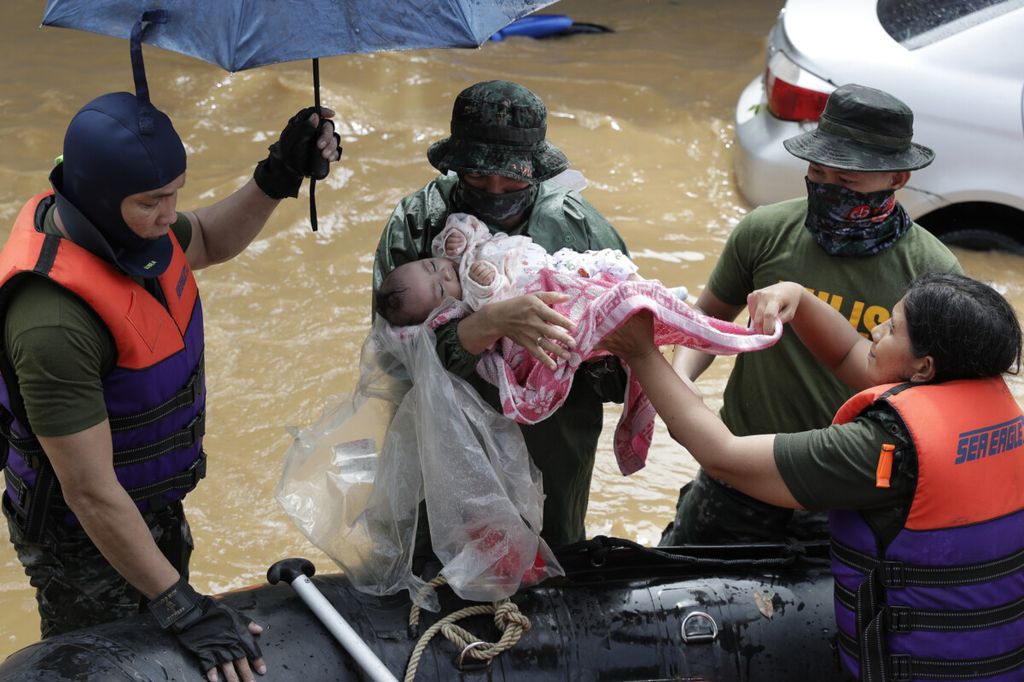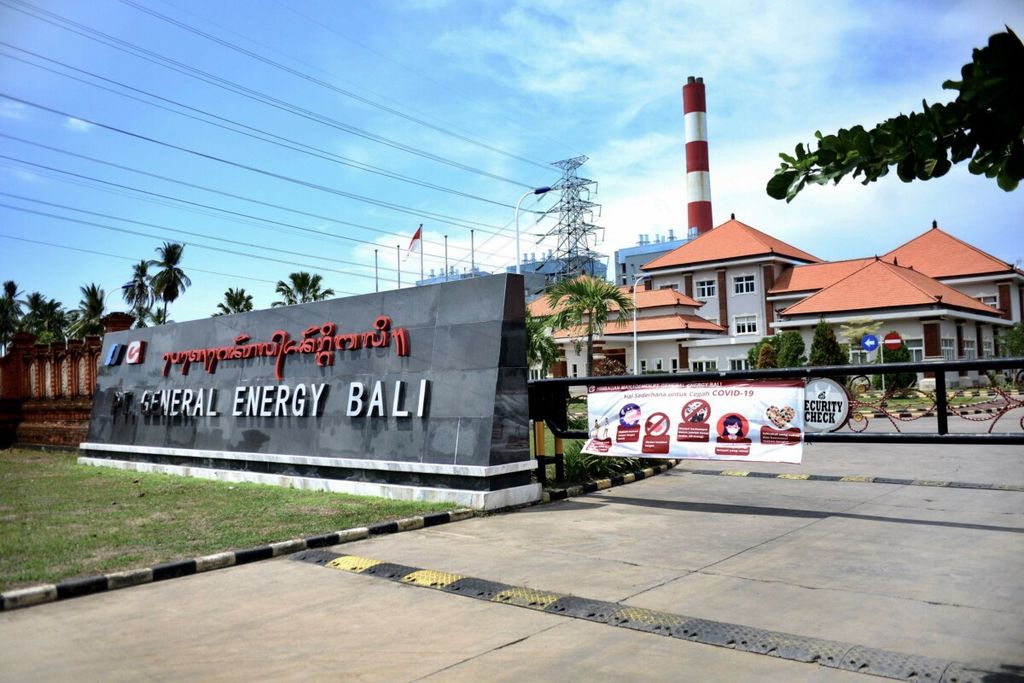Floods and Climate Change
In early February, heavy rain again poured over Jakarta, and floods ensued. The rain in Jakarta on February 19, 2021, was as intense as that when Jakarta was flooded at the beginning of 2020 (1 January 2020).

In early February, heavy rain again poured over Jakarta, and floods ensued. The rain in Jakarta on February 19, 2021, was as intense as that when Jakarta was flooded at the beginning of 2020 (1 January 2020).
On the following day, 20 February, 2021, rain with an intensity of 226 millimeters was recorded in the Pasar Minggu area. Meanwhile, in Halim, 176 millimeters were registered during the night. The rain lasted for 3-4 hours, which was shorter than that in early 2020.
Last year, Halim recorded 377 millimeters over 10-11 hours. So, assuming night-long rain, if the data were doubled (to make the duration equal), a rate of above 400 millimeters a day would be obtained for both Pasar Minggu and Halim. That means it is close to the rate of last year. Consequently, the intensity is comparable to last year’s.
Extreme phenomena
The above observation data are fantastic figures in the historical rain records available. Java Island gets 2,300 millimeters of rain on annual average, and at the peak of the rainy season, it receives around 300 millimeters per month.
The figures mentioned above are extreme and only occur with very low frequency. In hydrological terminology, the return period rate or possibility of recurrence is on the scale of 50 to 100 years.
Also read: Extreme Weather, Weather Modification and Disaster
How can such extreme rainfall happen? In January, we got news of floods in South Kalimantan that lasted long enough with a record rain intensity of 270 millimeters on 13 January, 2021, in Banjar Baru, the area of Syamsuddin Noor Airport. The figures registered in the region also constitute an extreme record value resulting from the rain on that and the preceding days.
The Sahara Desert just experienced snowfall in January, while the same mishap was faced by Texas in southern US.
Extreme rain is frequently caused by global events instead of local occurrences, namely global warming and climate change. The Sahara Desert just experienced snowfall in January, while the same mishap was faced by Texas in southern US. The southern parts of the US, like Miami and Florida, recently (in 2020) had the largest number of tropical cyclones (usually known as hurricanes) in a year ever recorded.

Rescuers carry a baby as floods continue to rise in Marikina, Philippines due to Typhoon Vamco on Thursday, Nov. 12, 2020. A typhoon swelled rivers and flooded low-lying areas as it passed over the storm-battered northeast Philippines, where rescuers were deployed early Thursday to help people flee the rising waters.
Although the relations between increased extreme conditions in a region and global warming cannot be directly connected, the various events currently taking place force humans to acknowledge that there is in fact an indirect connection.
Global warming trend
Records show that the earth’s temperature has kept rising in line with the rate of carbon dioxide gas concentration in the atmosphere, which has now reached 400 parts per million (ppm).
Data on extreme conditions also indicate an ever-increasing trend in intensity and frequency. Global phenomena like El Niño and La Niña, too, display a rising trend in intensity and frequency. Then, why does all this happen?
Also read: Flood Points Increases
Global warming is induced by greenhouse gas accumulation resulting from industrialization, combustion, energy utilization and human consumption. Since the end of the19th century, it has been found out that greenhouse gas is present in the atmosphere and creates the effect of a greenhouse.
The greenhouse effect can be simply understood when we are in a car during daytime. Gradually but certainly the room inside the car will warm up, because the energy and heat of sunlight continue to penetrate and be trapped in the glass-covered room of the car.
This is what happens with global warming, in which greenhouse gas will function in the way a greenhouse does, and its presence can presumably last for one to two centuries with this function.
/https%3A%2F%2Fkompas.id%2Fwp-content%2Fuploads%2F2020%2F02%2F20200225_ENGLISH-TAJUK_B_web_1582639001.jpg)
A man sits on a police dinghy on a flooded Jl. Bendungan Hilir in Central Jakarta on Tuesday (25/2/2020). Intense rainfall caused floods that inundated a number of areas in Jakarta, Bekasi and Tangerang.
Conceivably, during that period, if greenhouse gas accumulation occurs and lasts for one to two centuries, it will function to continuously warm up the atmosphere, causing global warming.
So, the presence of greenhouse gas will increase the energy in the atmosphere. The energy felt by humans is in the form of warm energy.
As we have learned in physics in junior high school, energy in nature is permanent and can only change into other forms of energy.
The warm energy in the atmosphere can change into caloric energy in the form of heat, or kinetic energy in the form of strong winds or cyclones, like those in the US, or it can become potential energy in the form of heavy or extreme rain. It can thus be understood that the kinds of hydrometeorological disaster channel those types of energy.
Global mitigation efforts
When floods hit Jakarta on January 1, 2020, the height of clouds causing the floods based on satellite data was 15 kilometers, or above the cruising range of intercontinental flights. It requires enormous energy to produce such vast clouds. In other words, the stove or machine that generates today’s clouds is no longer as it was several decades ago.
Also read: Please Pak Jokowi, Give Us a Bridge
Hopefully, we are now even more aware of what we are facing. Preparations to deal with the risk of extreme weather at present can no longer be based on the calculation standards used so far.
We have not yet conducted studies on the extent to which a region can absorb rain and the rate of intensity tolerated.
Many of us blame land management for making it incapable of accommodating downpours. We have not yet conducted studies on the extent to which a region can absorb rain and the rate of intensity tolerated.
If we calculate the absorption capacity, we can later blame the local state agency when it fails and causes flooding while rainfall is below the accommodation capacity already determined.

This picture taken on October 29, 2020 shows the Celukan Bawang 2 power plant in Singaraja on Indonesia\'s resort island of Bali. - Chinas plan to fund dozens of foreign coal plants from Zimbabwe to Indonesia is set to produce more emissions than those of major developed nations, threatening global efforts to fight climate change, environmentalists have warned.
The time has come for Indonesia to redouble its efforts to control climate change. Although global joint efforts are undertaken, the effect we can feel is local in nature.
The US government is now striving to return to the Paris Agreement on climate change. The European Union has drawn up an action plan to achieve carbon neutrality in 2050.
Also read: The Face of Solidarity in Banjarmasin Floods
Several countries have declared their termination of the use of coal. A number of cities in Europe have also considered banning the use of fossil-fuel cars within the next few years.
Besides, the Intergovernmental Panel on Climate Change (IPCC) has also indicated that the voluntary contributions to the climate change mitigation program from all countries in the world are only sufficient to support one third of the efforts to keep global warming within 1.5 degrees. Global efforts actually need to be roughly tripled.
/https%3A%2F%2Fkompas.id%2Fwp-content%2Fuploads%2F2018%2F01%2Fkompas_tark_4015544_21_0.jpeg)
Edvin Aldrian
In order to create the global conditions related to carbon neutrality in 2050, large-scale technology transfer endeavors are needed. This can only be achieved through the transfer of technology from advanced nations to developing countries. With the vast impact of hydrometeorological disaster and the possible worsening of the situation in the future, we inevitably have to carry out our climate change mitigation attempts to the best of our capacity.
Edvin Aldrian, Professor of Meteorology and Climatology, BPPT; Intergovernmental Panel on Climate Change, Working Group 1 Vice Chair
(This article was translated by Aris Prawira)